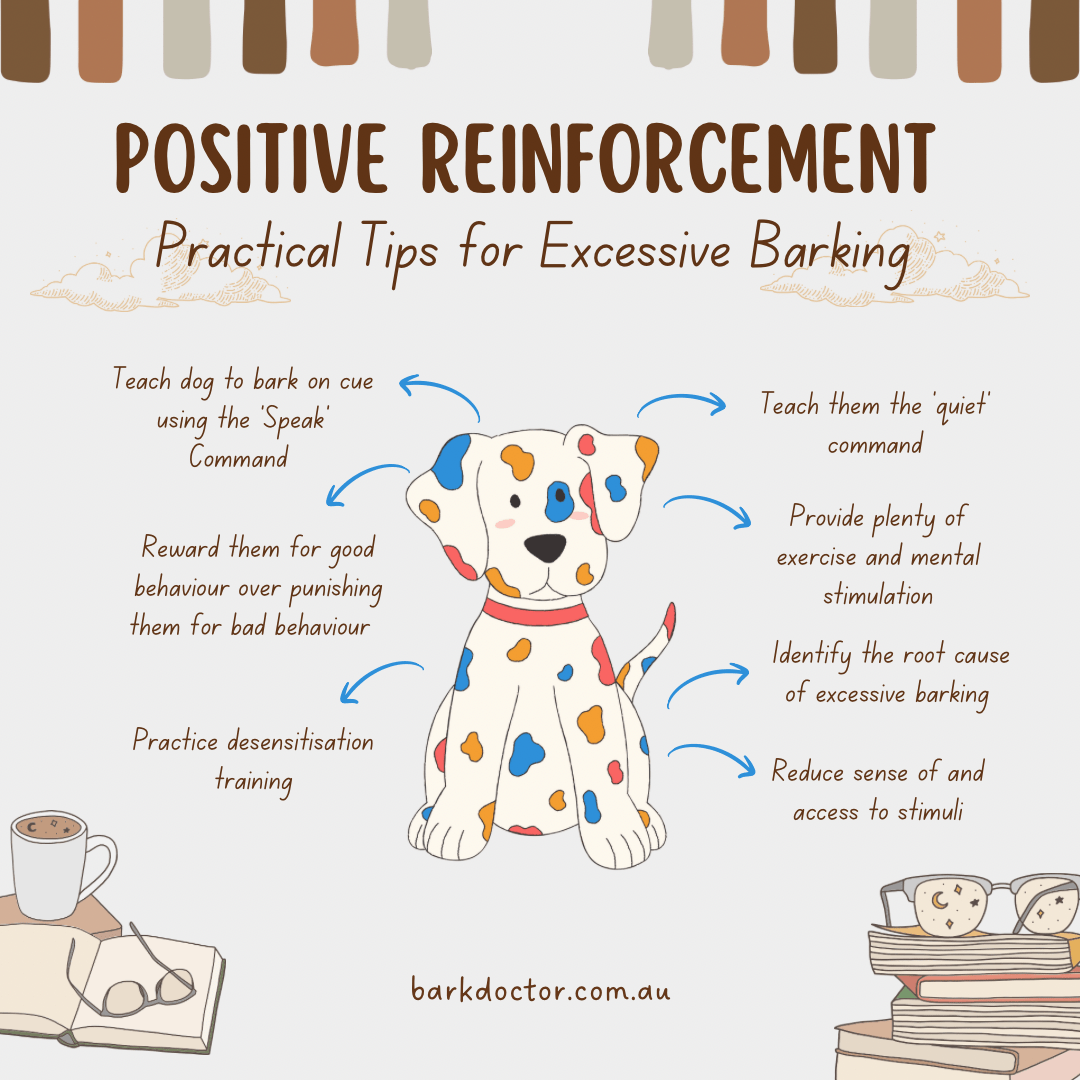
Positive Reinforcement: A Practical Guide for Dog Barking
Positive reinforcement training should never stop even when you’ve decided to use a bark collar for your dog. Training collars are simply tools to use as part of a holistic approach to setting up your dog’s environment, lifestyle and training to better encourage healthy behaviours.
Here are some practical examples of using positive reinforcement to reduce excessive barking:
1. Train your dog to bark on cue
Teach your dog the command "speak" and reward them with a treat when they bark on cue. This way, you can control when your dog barks and when they don't.
2. Teach your dog the "quiet" command
Once your dog has learned to bark on cue, you can teach them the "quiet" command. Say "quiet" in a calm but firm tone when your dog barks excessively, and reward them when they stop barking.
3. Practice desensitization training
Help your dog become less reactive to the triggers that cause them to bark excessively. For example, if your dog barks at other dogs, you can gradually expose them to other dogs at a distance and reward them for staying calm.
4. Reward good behaviour
It’s important to focus on rewarding your dog for good behavior rather than punishing them for bad behavior. Whenever your dog stops barking or stays calm in a challenging situation, reward them with treats or praise.
5. Provide plenty of exercise and mental stimulation
Dogs that are bored or under-stimulated are more likely to bark excessively. Make sure your dog gets plenty of exercise and mental stimulation through activities like walks, interactive toys, and training sessions.
6. Reduce the dog’s sense of or access to stimuli
Sounds contradictory to practicing desensitisation but it is meant to be complementary. Desensitisation to stimuli that trigger barking is the end goal, but this can’t be achieved overnight so in the meantime, practical things like creating a safe space for the dog in the backyard when the common triggers for barking is at the front yard or stopping dogs running along a fence line during school drop off or pickup times by setting up barriers can all help you reduce excessive stimulation to the dog’s senses especially when you’re not at home.
Remember, every dog is different, so it may take some trial and error to find the right training techniques for your furry friend. But with patience, consistency, and lots of positive reinforcement, you can help your dog overcome excessive barking even without resorting to a bark collar.
